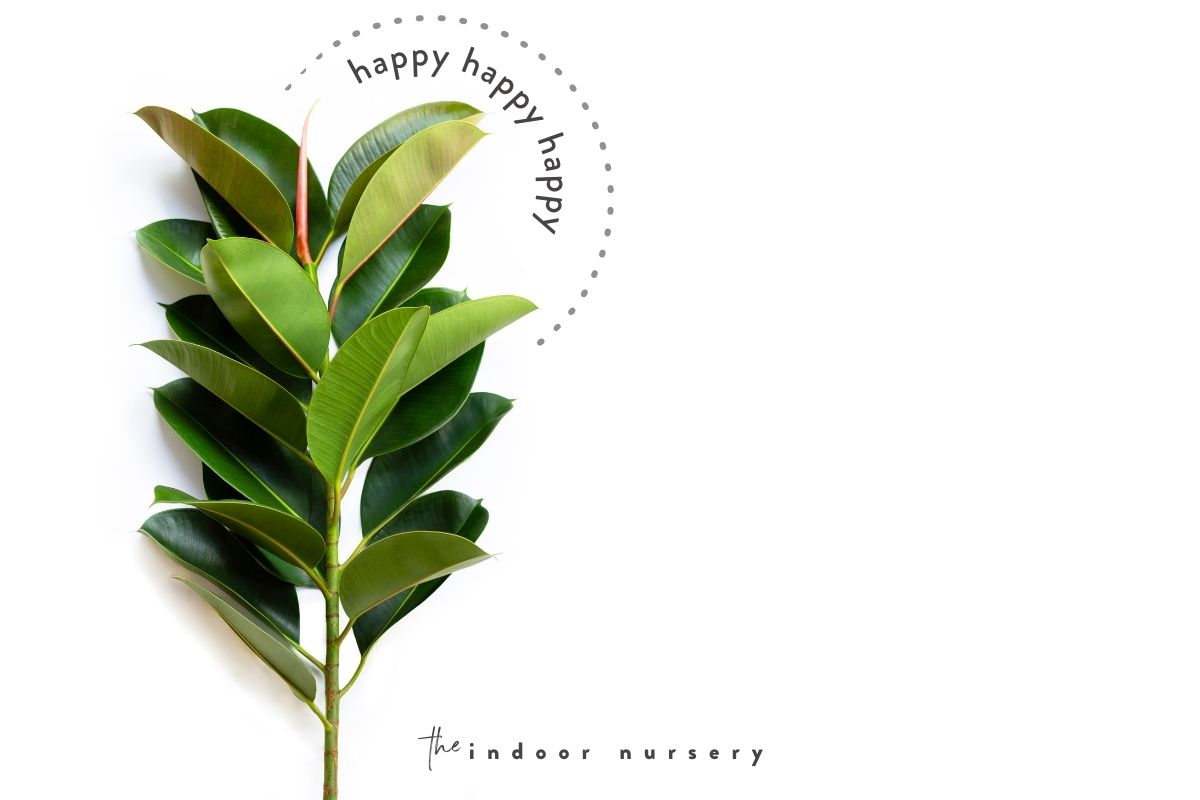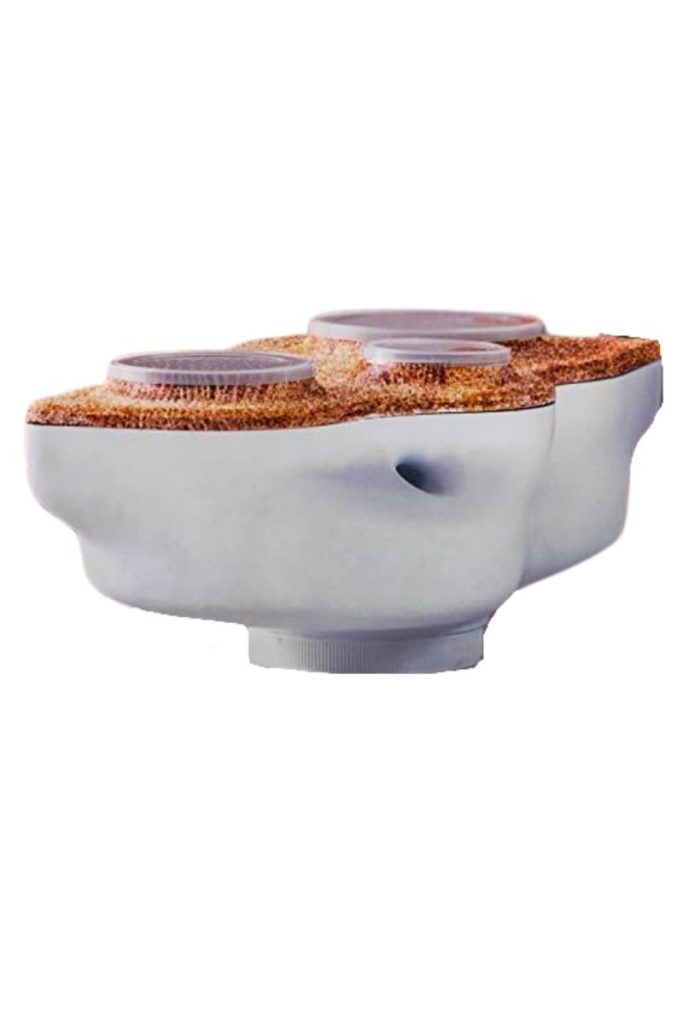Rubber plants are not used for making tires (don’t worry I thought that too). They are actually called rubber plants because they produce a milky latex sap, which does produce the latex that was once used to make rubber in the past.
They sometimes are also called India rubber tree or rubber bush, since they are commonly found growing in south Asia & southeast Asia.
Because they’re so adaptable, it is also possible to find them in more humid, tropical climates in places like Florida or the West Indies.
Their botanical name is Ficus elastica (so sweet and cute isn’t it)?! They are a member of the banyan group within the fig family, but unfortunately do not produce fig fruits.
This tree is incredible for all plant lover’s who want to add a tropical, beautiful vibe to their space. It can grow to a larger size or you can keep it small, if you leave it in a smaller pot and monitor the growth.
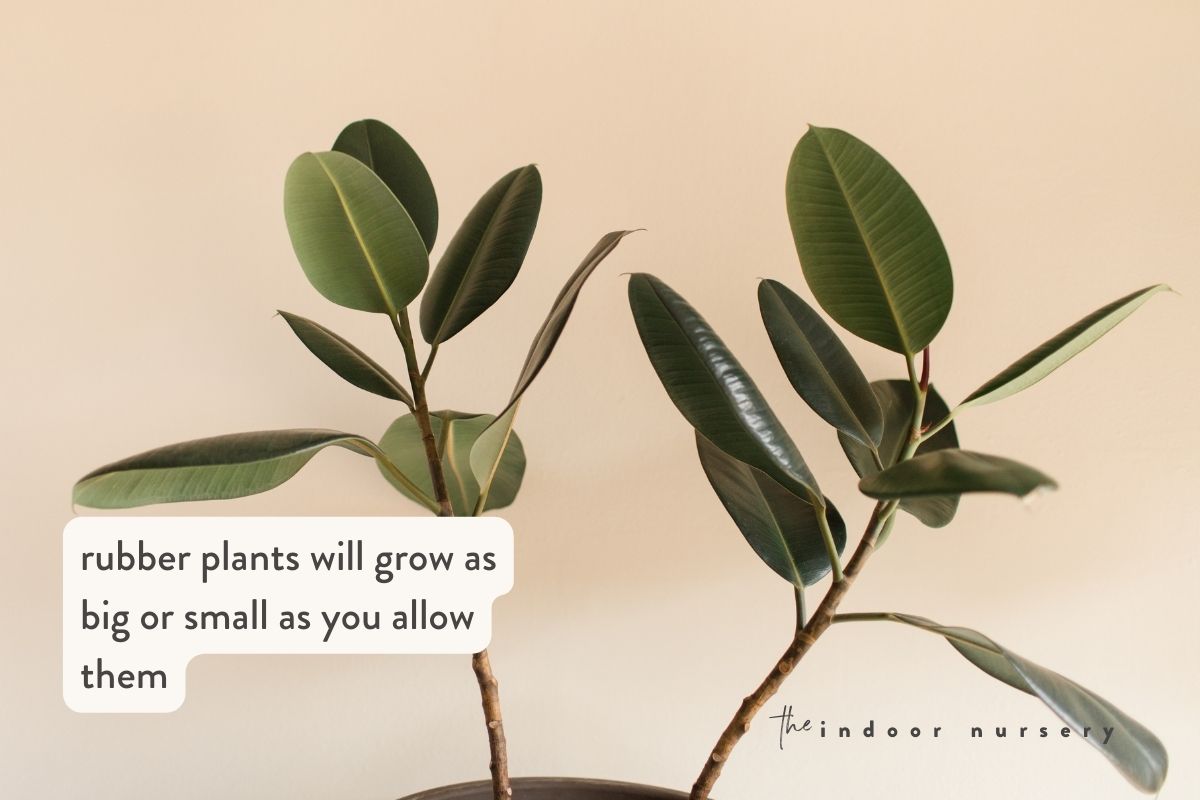
In a NASA clean air study, they found that the rubber plant removes toxins like for formaldehyde from the air, which purifies your indoor environment.
Let’s find out what the best way to fertilize your rubber plant is so you can keep strong and healthy from the inside out!
What your rubber plant needs as fertilizer
Almost all house plants need fertilizer, but rubber tree plants are happy with being fertilized once a month during their growing season.
About 4-6 weeks is a good amount of time between fertilizing, unless you are using a slow-release granular fertilizer which releases over time.
Granular fertilizers can be used every couple of months to not over-fertilize your plant.
You know that saying “too much of a good thing?” Well, the same goes for the plant realm, too much fertilizer can cause root rot.
If you have a new or baby rubber plant, it is recommended to use a high phosphorus fertilizer to help with essential nutrients as well as facilitate healthy root growth. This will ensure that young roots have enough nutrients for healthy growth.
Once your plant matures, you can shoot for an NPK ratio of 24-8-16, that is 24 parts nitrogen, 8 part phosphorus, and 16 part potassium. This ratio will help the plant’s growth as well as improve root development.
One thing you do need to be aware of with your indoor plants is the time of the year. They do have a dormant season during the colder months (which in the plant world translates roughly to that “they are done growing and going to sleep for a bit.”)
Fertilizing your rubber plants during their dormant season could cause damage to the root system and affect the leaf growth. Rubber plants also do not need to be watered during their dormant season.
Different fertilizers for your rubber plant
The main types of ‘plant food’ that you can fertilize your plant with includes nitrogen, phosphorus and potassium. Nitrogen is a big one for rubber tree plants, as they like to have their huge, glossy leaves and nitrogen helps with photosynthesis. It also is the main ingredient to stimulate leaf growth.
The fertilizer options of organic fertilizers include; a liquid fertilizer, granular fertilizer and slow-release fertilizers.
We recommend starting with a liquid plant food fertilizer if this is your first time fertilizing your houseplants. One that has a balanced 10-10-10 ratio of nitrogen, phosphorus and potassium can also be used for other indoor plants, jackpot! You just need to dilute it to half strength and mix 1/8 tablespoon with a quart of water. So simple!
Liquid fertilizers are the most common & easy to start with that come with an already concentrated liquid that can support you in minimizing the risk of overfertilization.
There are also other slow-release fertilizers known as granule fertilizers that can be mixed in the soil or potting mix. They also work well for indoor conditions, if you want your plant to grow really large (up to 8 feet.)
If you want to save a bit of money… You can make your own compost to supplement your plant’s soil!
Yep, all those old coffee grinds, egg shells, dead leaves, branches bark and worm castings make a well-balanced organic mix of plant food that can be used.
If you choose a non-organic fertilizer, there is more of a chance that chemical will go into the soil of your plant. They are highly processed, but may have more precise NPK ratios. Synthetic fertilizers break down the nutrients faster, so it’s up to you to decide what you feel. They are not as environmentally friendly, but can be useful in situations if your plant is looking sad & droopy and needs a quick boost of nutrients.
How to fertilize rubber plants
Fertilizing is actually quite easy, you just need to use the correct ratios of nitrogen, phosphorus and potassium.
First, choose the type of fertilizer you want to use (liquid, slow-release, granules) and prepare half of the recommended dosage from the bottle to test it out. By doing this, you will avoid burning your plant’s root system.
Mix a 1/4 of the fertilizer into a gallon of water, and water normally. Make sure the soil is moist, if you fertilize with dry soil it could damage the plant. Fertilize every 4-6 weeks in the normal growing season, and avoid fertilizing during the dormant season. Remember, over-fertilization is a big no-no as it causes root rot.
Signs your rubber plant needs more fertilizer
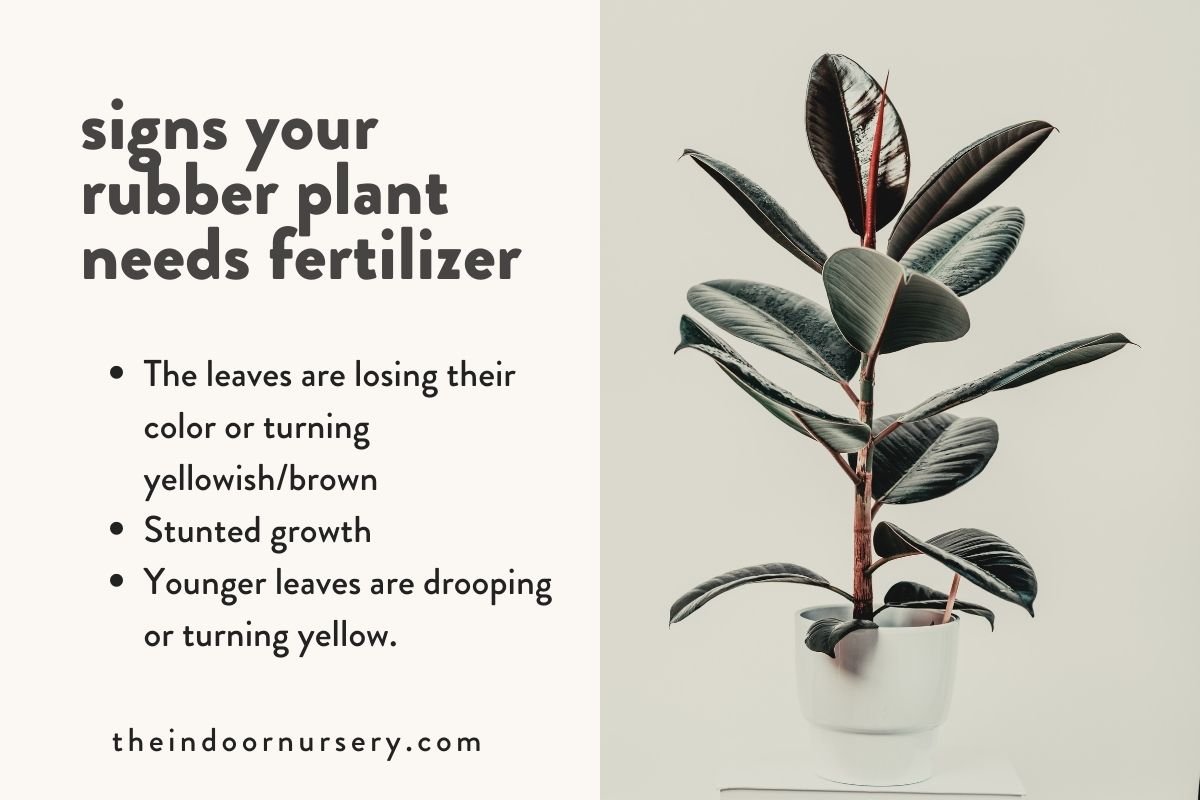
- The leaves are losing their color or turning yellowish/brown. Your rubber plant leaves should have vibrant, glossy leaves. This is a tell-tale sign that your plant is lacking some of the necessary nutrients to thrive. (This can also be a sign of nutrient burn.)
- Stunted growth. Fertilizers will encourage growth in your plants, if the growth slows then this may mean your plant needs more fertilizer. (Note: in dormant season, it is normal for the plant growth to slow down.)
- Younger leaves are drooping or turning yellow. This could also be due to your potting soil, and may mean you need to change it with fresh oil. Otherwise, an organic fertilizer can help provide more nutrients to the rubber plant’s leaves. It could also be a sign of excessive watering.
Best fertilizers for ficus elastica
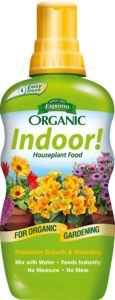
Espoma Organic 2-2-2 fertilizer
This fertilizer has a well-balanced formula that makes it so you can’t go wrong. It has all the essential nutrients for your plant to thrive. It is liquid, and organic and you only need ½ cap of indoor plant food liquid per quart of water.
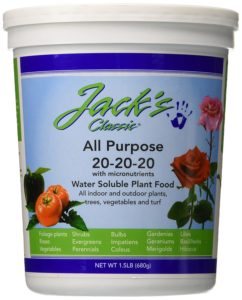
Jacks All Purpose 20-20-20 Houseplant Fertilizer
This fertilizer is synthetic, but it is affordable and can do the job of feeding your plant. It comes as a soluble powder, and will help keep the foliage of your plant looking pretty & green!
FAQ
What types of different rubber plants are there?
There are many different types of rubber plants including baby dwarf sized ones! Some may have green leaves, and others can have more reddish coloured leaves. The signature of their leaves is looking quite shiny, vibrant and silky smooth. You can choose the species that suits you and the type of vibe you are looking to create in your home or office space.
– The Ficus elastica ‘Robusta’. This variety stays true to its name “robust” meaning strong & healthy growth and is known for having large, leathery green leaves.
– Ficus elastica ‘Decora’. This tree is more decorative with large, glossy dark green leaves.
– Ficus elastica ‘Burgundy’. Just as it sounds this rubber plant tree variety will have gorgeous burgundy red coloured leaves with bright red stems that will be sure to bring you positive energy.
– Ficus elastica ‘Tricolor’. In this variety, you will notice the leaves having a more pinkish, creamy tone on their green leaves.
– Ficus elastica ‘Tineke’. This variety will give off shades of light and dark greens leaves, with pink stems.
– The Ficus elastica ‘Abidjan’
– The Ficus elastica ‘Melany’
– Ficus elastica ‘Doescheri’
– Dwarf Ficus elastica
Do rubber plants like coffee grounds?
Rubber plants like coffee grinds since they prefer a bit of acidity, but just be sure not to use the coffee grounds directly on the plant. Compost with coffee grounds mixed in will be effective in slowly releasing nutrients to your plant’s roots.
Coffee has a really high source of nitrogen (plants love caffeine just as much as us humans!) Just make sure to mix your coffee grounds with other organic material & do not put them directly on the soil because it can lead to fungal problems or stunted plant growth. Coffee grounds help retain moisture in the soil & make it an attractive home for earthworms.
How can I make my rubber plant grow faster?
To make your rubber plant grow fast you can use a liquid fertilizer. Also make sure all of your plant’s needs are being met in terms of water, light & fresh soil. Think of it this way: the more building blocks (like nutrients and light), the more the plant can grow.
Final thoughts
Now you know different types of fertilizers to use and precautions to take when fertilizing or using compost for your rubber plant. We hope this was informative & helpful and that your rubber plant keeps its healthy & vibrant growth for many seasons to come.
More about fertilizing
- 10 Best Worm Composter Bins For Easy Homemade Compost
- Compost Starter 101: When You Need It And How To Make It
- Our top pothos fertilizer picks for luscious vines
- 5 reasons to use coffee as fertilizer for your plants
- Best fertilizer for Monstera plants for gorgeous leaves
- Fertilizer Burn on Plants? Here’s How to Fix it
- Fiddle leaf fig fertilizer: How to feed your fiddle leaf

